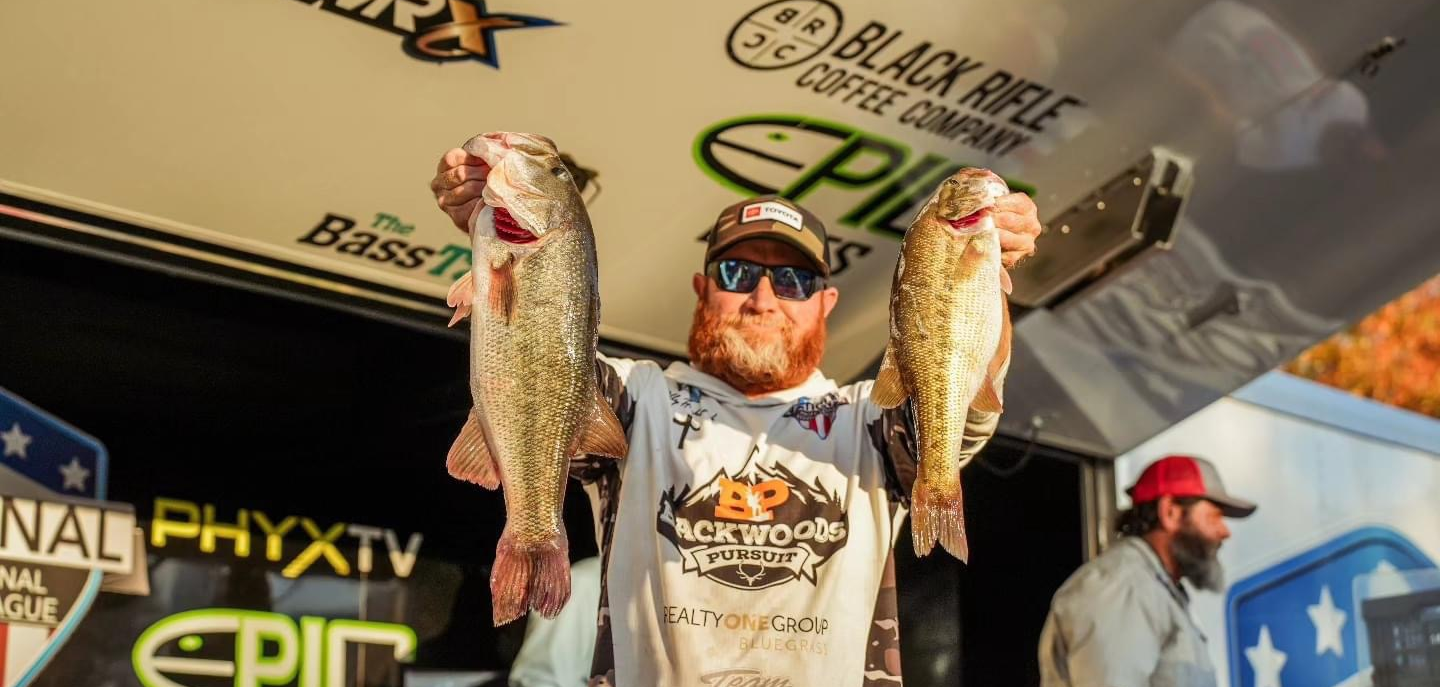How important is a deep cycle marine battery? They are not that “cool” piece of gear you show your buddies or post about on social media, but not having the right deep cycle marine batteries or the right trolling motor battery can mean a world of hurt for a competitive (or even casual) fisherman. So what did I test? For this review I put the NAPA 12V Marine Starting Flooded Battery BCI 27M and three of the NAPA Marine Deep Cycle Battery BCI NO. 31 to work during a wide range of situations including casual days on the lake ripping lips to competitive bass tournaments traveling the US for the National Professional Fishing League (NPFL).
How I Tested Them – NAPA Deep Cycle Marine Battery & Trolling Motor Battery
First let’s break down how I tested the deep cycle marine batteries and what equipment I use them on so you get an idea of exactly what kind of abuse these batteries have gone through. I currently run a 2020 Nitro Z21 Bass Boat with a 250 HP Mercury Pro XS motor of the same model year as the boat. This setup provided me with plenty of opportunities to thoroughly test out the NAPA deep cycle marine battery and the NAPA trolling motor battery.
MY EQUIPMENT BREAKDOWN
Starting at the front of the boat, here is the setup I was running off of these NAPA deep cycle marine batteries:
- Minn Kota Ultrex DSC 112 lb trolling motor
- KVD Hydrowave Fish Calling Package
- Lowrance Active Target
- Lowrance HDS Pro 12
- Lowrance HDS Pro 16
At the console of the boat sit twin Lowrance HDS Live 12s mounted side by side along with the standard gauges and an additional GoPro wired into the boat. At the rear of the boat, I have Power Pole shallow water anchors with an RMP navigation light mounted on one of the poles.
I mention all of these accessories to give an actual frame of reference for just how much power consumption is needed throughout my typical day on the lake and how critical having the right deep cycle marine batteries can be for a competitive angler like myself.

Fishing competitively in the National Professional Fishing League throughout 2023 has taught me a great deal about what kind of brutal abuse my equipment must be able to endure day in and day out. Traveling across the country to six different states while putting nearly 25,000 miles on your truck and racking up nearly 650 hours on your motor will tell you a lot about the quality of the gear you are using as well as where your shortcomings are.
Make sure to check out our other gear reviews and the Backwoods Pursuit YouTube Channel to help you decide what gear will help you stay out in the field longer!
For reference, the average competitive fisherman who owns a boat puts roughly 200 hours on their motors every two years. Bottom line: I spend A LOT of time on the water and need the right equipment to get the job done. Now that the basics are out of the way, let’s discuss the batteries I recently tested from NAPA.
COLD CRANKING AMPS AND WHY THEY MATTER
Why are cold cranking amps (CCAs) important? CCAs correlate with the power to start your motor in extreme cold temperatures and represent the amperage the battery can supply the motor at zero degrees for 30 seconds.
Boaters, and particularly anglers, around the country can find themselves in extreme temperatures (both hot and cold), so having adequate cold cranking amps is critical. Think of it as you being out on a cold rainy day where you have been soaked to the bone. It pulls the heat and energy right out of you. Batteries are no different, particularly ones that are exposed to water and the elements like a marine battery.
What I Tested – Deep Cycle Marine Batteries
NAPA DEEP CYCLE MARINE BATTERY
Some regard the battery that is responsible for starting the motor as the most important battery on a boat. This critical battery is what gets your day going on the lake and is not one that you want to fail. The NAPA Marine Starting Flooded Battery BCI 27M 12 volt battery was subjected to the above-referenced abuse and I pushed this battery hard. Weighing in at roughly 53 pounds and delivering 840 CCAs, it is not the best you can find in those departments but does the job adequately.
Most people who run a larger motor like mine recommend a starting battery close to 1,000 CCAs, so this NAPA BCI 27M battery was a little underpowered for my liking but it performed admirably given its inherent limitations. My last battery prior to testing this one was an Interstate Marine 31M-AGM 12V with 925 CCAs. One benefit to these marine batteries is that NAPA offers a very convenient 12 month free replacement warranty on all NAPA marine batteries.
How did they do? Like most anglers, I have all my electronics linked to my starting battery since that battery is charging whenever the motor is running. At any given time, I have four Lowrance graphs, two live wells, standard gauges and lights, a Hydrowave, and various other small amperage items on for up to 10 hours a day. There are even times when I need to power these units for more than 10 straight hours.
While out testing this NAPA deep cycle marine battery and these NAPA trolling motor batteries, I ran the boat for 8-10 hours a day three days in a row without turning off any electronics or charging before I started to notice a significant delay in amperage when starting the motor.
The biggest potential concern or question for anglers like me is: “Does enough power get pushed to my electronic units to see fish clearly when I need to find them?” I spend a lot of time behind the console of my boat looking at graphs and scanning for bass, and I have been very pleased with the amount of power these NAPA marine batteries provided to give the clarity I needed in all my graphs. They require significant power consumption so this is no small ask.
Make sure to refer to the Vehicle Fitment Guide on the NAPA website before purchasing a battery to ensure you have the correct one. Also, these batteries are much easier on the wallet coming in at under $200 dollars each in comparison to my previous battery at $450.
NAPA TROLLING MOTOR BATTERY
Now to the trolling motor batteries. I have three 12V NAPA Marine Deep Cycle batteries linked into a 36V system which runs my trolling motor alone. Now, three batteries may seem like a lot, but I do not currently have one of the new Power Pole charging systems. Like most fisherman, my trolling motor batteries are not connected to a bigger motor with an alternator to recharge them, so they are self-contained all day long. Weighing it at 60 pounds a piece, each of these batteries provides 650 CCAs.
These batteries also come in at under $200 a piece and are much easier on the pocket than most marine batteries. The previous batteries I had in my boat were Interstate Marine Deep Cycle SRM-31 at 625 CCAs. Those batteries are roughly the same price as the NAPA batteries, also come with a 12-month warranty, and weigh within ounces of the NAPA batteries.
What I liked – NAPA Deep Cycle Marine Batteries
I would be lying if I didn’t say that I was a bit apprehensive about this NAPA deep cycle marine battery and the NAPA trolling motor batteries because of the mixed reviews out there. Reviews can be tough as most of the time you do not know how the batteries were used, how they were taken care of, and what performance folks actually got out of them. Failure can come from a wide range of reasons, but overall I walked away very pleased with these marine batteries after my testing.
A few of the highlights were:
- Battery specs are accurate and as advertised.
- NAPA representatives answered questions promptly and accurately.
- Power consumption and output are very similar to a much more expensive battery.
Time will ultimately tell how these batteries hold up, but so far through my rigorous testing as noted above, they have performed very well.
What I Disliked – NAPA Deep Cycle Marine Batteries
While I did not come away with a long list of dislikes, there were a few things I noted that could have been better. One performance issue I observed was that after running my live wells for roughly 12 hours, the battery had a little trouble cranking the motor. However, it did crank, and to be fair 12 hours is a VERY long time to go running live wells without a charge when most fishing tournaments are no more than 8 hours.
Another downside to these NAPA deep cycle marine batteries is that they are heavy. If weight matters in your boat like it does for me during tournaments when zipping around the lake from spot to spot and doing so as quickly as possible, these heavy batteries reduce the top speed of your boat by a few miles per hour. While this may not be a big deal to most people, it is for me because every second matters and the extra weight could cause you to get edged out of a spot by a competitor who gets there slightly faster.
A few of the downsides included:
- Began having trouble cranking after 12 hours running a live well.
- Heavy in comparison to their CCAs and other specs.
NAPA Marine Batteries Warranty
NAPA batteries come with a 12-month replacement warranty that I have yet to have to use. I hope I do not have to as the best warranty is the one that is not needed, but time will tell. As of the writing of this article, I have been using and abusing these batteries for roughly 6 months and so far so good.
Conclusion
Based on running NAPA batteries over the past several months in A LOT of different elements, I am pleased with the starting battery’s performance. Are they the best you can get? Most certainly not. The CCAs are a bit on the low side for what I typically look for in a deep cycle marine battery and they are are on the heavy side vs more expensive lithium batteries. That said, I have used this battery from temperatures in the low teens during late winter up to as hot at 80 degrees this year. At both those temperature extremes they never failed or caused any problems at all.
The trolling motor batteries produce a sufficient amount of power for my trolling motor to sustain anything and everything I have put them up against. Everything from six footers on Saginaw Bay in Michigan to the roaring flood gates and current of Lake Pickwick in the spring rainy season.
Even though the specs will not blow you away, these NAPA marine batteries have done their job and done it at a price point that is much more friendly to the wallet than many others I have used. The real test will be time as I continue to use them throughout the coming year, but we will update this review if anything significant happens during that further testing.
Subscribe to Backwoods Pursuit to get Your FREE Backcountry Gear Worksheet!!!
Dial in your gear list, calculate your pack weight, and lighten up your pack with this handy tool!










